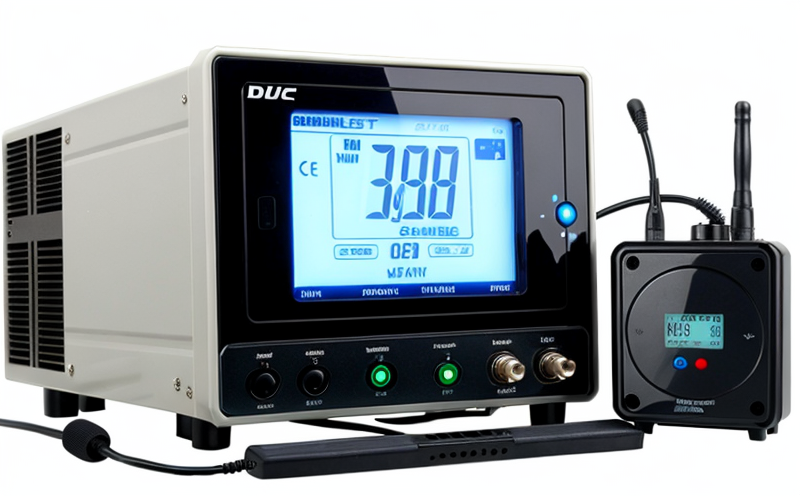CSA C108 RF Emission Testing for Canadian Wireless Devices
The CSA C108 standard is a critical requirement for all wireless devices intended to be marketed in Canada. This regulation ensures that the radio frequency (RF) emissions of these devices do not interfere with other communication systems or cause harmful exposure to users. For quality managers, compliance officers, R&D engineers, and procurement professionals, understanding this testing procedure is essential.
CSA C108 specifies the limits for electromagnetic interference (EMI) from wireless devices operating in Canada. Compliance with these standards helps manufacturers ensure that their products meet safety and performance requirements, thereby avoiding potential regulatory issues and product recalls. The testing process involves measuring RF emissions to confirm compliance with the specified limits.
The testing procedure typically includes several steps: device preparation, emission measurement setup, data collection, and analysis. Before testing begins, the device must be fully assembled according to manufacturer specifications, including all accessories and software updates. Once prepared, it is placed in a Faraday cage or anechoic chamber designed for RF measurements.
During the emission measurement process, various frequency bands are scanned using specialized equipment such as spectrum analyzers. The data collected from these scans are compared against the limits specified in CSA C108. If the device exceeds any of these limits, it must undergo modifications or redesign before retesting. Compliance with this standard not only ensures product safety but also enhances brand reputation and customer trust.
The importance of CSA C108 cannot be overstated, especially for companies operating in Canada or exporting products to Canadian markets. Failure to comply can result in significant financial losses due to non-compliance fines, lost sales opportunities, and damaged reputations. Therefore, understanding the testing requirements and ensuring compliance is crucial.
For R&D engineers, this knowledge supports iterative design improvements that align with regulatory standards. Compliance officers benefit from a clear roadmap for auditing and monitoring product development processes. Quality managers can leverage these insights to enhance internal quality control measures, ensuring consistent adherence to regulatory requirements.
Applied Standards
The CSA C108 standard is based on internationally recognized guidelines such as ISO 13406-1 and ISO/IEC 17025. These standards provide a framework for laboratory operations, ensuring that the testing process adheres to best practices in quality assurance.
- ISO 13406-1: This standard outlines the requirements for competence of persons performing conformity assessment activities involving technical services and results used to support them. It ensures that personnel involved in RF emission testing are qualified and capable of conducting accurate tests.
- ISO/IEC 17025: This accreditation standard sets out general requirements for the competence of testing and calibration laboratories. Compliance with this standard guarantees that the laboratory maintaining the equipment used for RF emission testing is reliable and meets international quality standards.
The combination of these standards ensures a robust testing environment where both personnel and equipment meet stringent criteria, leading to accurate and consistent test results.
Customer Impact and Satisfaction
Compliance with CSA C108 RF emission testing not only ensures that wireless devices meet regulatory requirements but also enhances customer satisfaction by delivering safer products. By adhering to these standards, manufacturers can reduce the risk of product recalls and associated costs.
For quality managers, compliance officers, R&D engineers, and procurement professionals, ensuring CSA C108 compliance is a key aspect of their roles. It allows them to make informed decisions about product development, production processes, and supply chain management. This focus on regulatory compliance also fosters trust between manufacturers and regulators, which can lead to smoother business operations.
Customer satisfaction is directly linked to the quality and reliability of products. By meeting CSA C108 standards, companies demonstrate a commitment to safety and performance, which translates into higher customer loyalty and repeat purchases. This, in turn, supports long-term business growth and sustainability.
Environmental and Sustainability Contributions
The implementation of CSA C108 RF emission testing contributes positively to environmental sustainability by minimizing the risk of harmful emissions from wireless devices. By ensuring that these devices do not interfere with other communication systems or cause health hazards, manufacturers can help reduce the need for product recalls and associated waste.
- Reduction in Regulatory Fines: Compliance with CSA C108 helps avoid financial penalties imposed by regulatory bodies, which can be a significant cost for non-compliance.
- Avoidance of Product Recalls: Ensuring compliance prevents the need to recall products, reducing waste and environmental impact. This also protects brand reputation and customer trust.
- Enhanced Brand Reputation: Meeting regulatory standards enhances the company’s image, leading to increased consumer confidence and loyalty.
In summary, CSA C108 RF emission testing plays a crucial role in supporting environmental sustainability by promoting responsible product design and production practices. This contributes to long-term business success while minimizing negative impacts on the environment.





